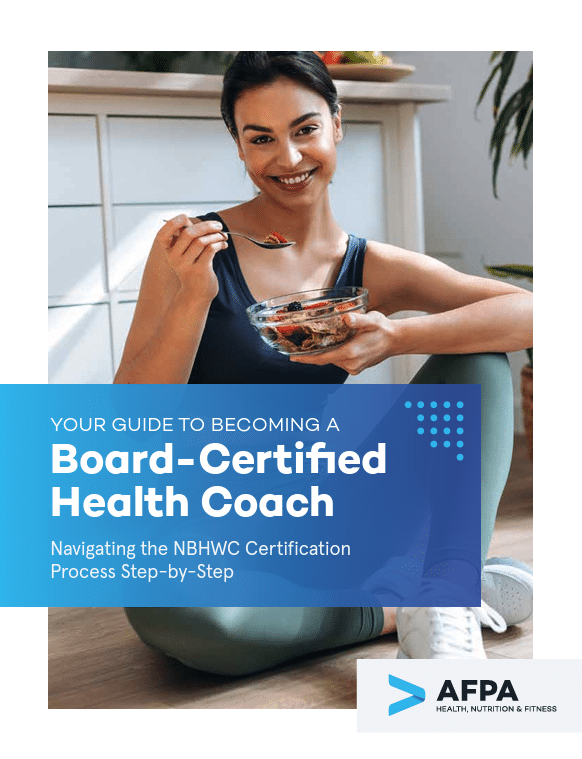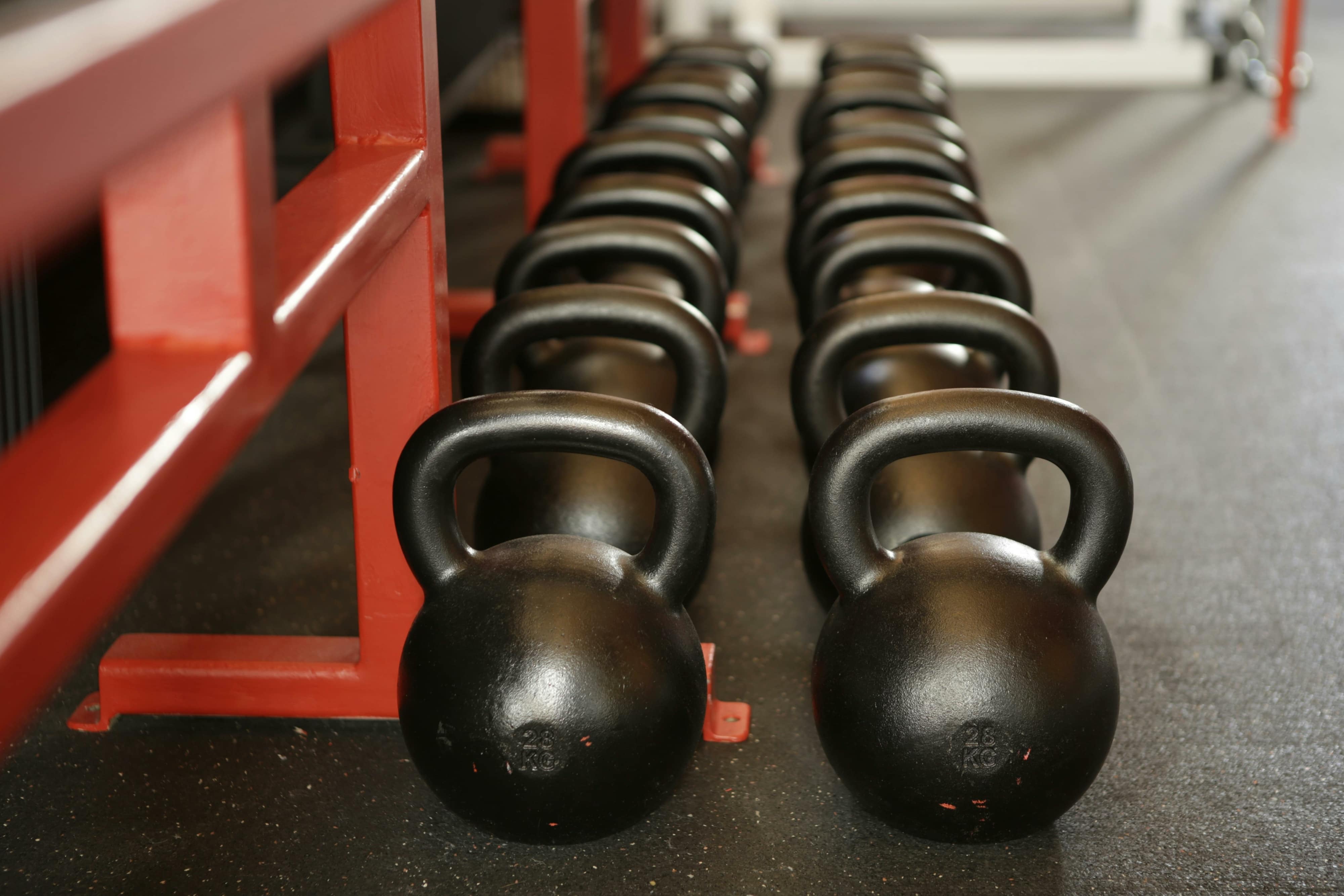Your client has high blood pressure. Understandably, they’re worried about the effect physical activity could have on their blood pressure.
So, how do you, as a fitness and health professional, ensure that they’re working out in the safest manner possible? How can you design a workout plan that’s “blood pressure friendly”?
Below, we cover what you need to know about coaching a client with high blood pressure, including the ins and outs of the chronic condition and the best exercises that could help get your client’s blood pressure back down to healthy levels.
What Is High Blood Pressure?
As its name implies, “blood pressure” refers to the pressure within arteries, blood vessels that deliver oxygen-rich blood from the heart to the rest of the body. A blood pressure reading consists of two numbers:
- Systolic blood pressure (top number): Represents the pressure in blood vessels when the heart contracts to push blood into the arteries throughout the rest of the body.
- Diastolic blood pressure (bottom number): Represents the pressure in the vessels when the heart rests between beats; when it’s filling and relaxing.
High blood pressure (i.e., hypertension) is defined as anything above 140/90 mmHg.
And, unfortunately, the health consequences of having high blood pressure can be dire—especially when left unmanaged.
More specifically, hypertension increases the risk of several dangerous side effects such as aneurysms, heart attacks, kidney issues, dementia, metabolic syndrome, and early death.
Thankfully, your client isn’t powerless in their fight against the condition.
Lifestyle changes like getting adequate sleep nightly, watching their sodium intake, and cutting down on alcohol indulgences are just some of the things that could help your client lower their blood pressure. Oh, and then there’s exercise.
Take this 2013 study, for instance.
Researchers found that sedentary older adults who participated in aerobic exercise training lowered their blood pressure by an average of 3.9% systolic and 4.5% diastolic—results comparable to certain blood pressure medications.
How Does Exercise Affect Blood Pressure?
Wait a minute. Doesn’t exercise increase blood pressure? Well, it does, but only temporarily.
In fact, all physical activity increases blood pressure.
That’s because the muscles now need more oxygen than at rest—which means the heart will have to pump harder and faster to circulate blood, so it meets this increased demand. As a result, systolic blood pressure rises.
It’s normal for systolic blood pressure to rise between 160 and 220 mmHg during exercise. But blood pressure should return to an individual’s “baseline” levels within several hours of working out.
That said, the more important takeaway here is that regular physical activity is an integral part of long-term blood pressure control.
There are two primary mechanisms through which exercise could help lower your client’s blood pressure levels:
- Promotes weight loss: If your client is overweight, helping them achieve their ideal body weight is one of the most effective lifestyle changes for controlling blood pressure. By increasing the number of calories your client burns daily, regular exercise could help them better stick to a calorie deficit, enabling weight loss. In general, research suggests that your client may experience a reduction of about one mmHg of blood pressure with every 2.2 pounds of weight they lose.
- Improves cardiovascular health: Exercise improves arterial stiffness. This, in turn, increases the volume of oxygen-rich blood each contraction of the heart brings to the rest of the body, essentially cutting down the cardiovascular system’s “workload.” And because the heart no longer needs to pump as hard or as fast to meet oxygen demands, blood pressure falls over time.

Get Your Free Guide
Learn How to Start a Fulfilling, Impactful Career as a Holistic Health Coach
You’ll learn:
- Why holistic health matters
- If holistic health coaching is right for you
- What career opportunities exist for health coaches
- And more!
Caveats to Exercising with High Blood Pressure
Although exercise can lower blood pressure, it’s worth noting that not all forms of physical activity are suitable for clients with high blood pressure.
By starting with a higher-than-normal blood pressure level at rest, your client is at increased risk of having their systolic blood pressure rising beyond 220 mmHg when exercising—increasing the likelihood of them suffering from a stroke.
So, how can you circumvent this? Answer: by controlling their exercise intensity.
In general, you should avoid having a client with high blood pressure do any high-intensity exercise. This is because high-intensity exercise can rapidly raise your client’s blood pressure and put too much strain on their heart and blood vessels. Examples of high-intensity activity include sprinting, powerlifting, plyometrics, and all forms of HIIT training (i.e., where they’re supposed to go “all-out” for a certain amount of time).
Instead, you should have your client do moderate activity. A good way to gauge your client’s exertion level is something called the “talk test.”
If your client is doing a moderate-intensity activity, they can talk but not sing during the activity. Cross into the vigorous-intensity activity “territory,” on the other hand, and your client won’t be able to say more than a few words without pausing for breath.
You should also have your client seek clearance from their primary healthcare providers before starting on an exercise program.
Some medications—including high blood pressure drugs—can affect heart rate and the body’s response to exercise. So, it’s always better to play it safe.
Best Exercises to Lower Blood Pressure
So, now you know that moderate physical activity is best for your client. But which type, exactly? Here are six of the most research-backed exercise modalities shown to be effective at lowering blood pressure.
Brisk Walking
While often thought of as an “inferior” form of exercise, the truth is that brisk walking offers plenty of health benefits.
Of course, most relevant to this article: The Framingham Heart Study suggests that your client could lower their systolic blood pressure by 0.45 points for every 1,000 daily steps they take. A 2013 study published in the Arteriosclerosis, Thrombosis, and Vascular Biology journal supports this.
Researchers found that those who participated in brisk walking regularly had a 7.2% risk reduction in hypertension, a 7% risk reduction in high cholesterol, and a 12.3% risk reduction in diabetes.
In addition to helping with long-term blood pressure control, brisk walking could also help improve your client’s mood. A 2018 study found that just ten minutes of walking is all it takes to lift someone’s spirits.
That said, the keyword here is “brisk.”
As a rule of thumb, for your client to be brisk walking, they’ll need to move at a speed of around three mph. One of the easiest ways for your client to monitor their walking speed is a fitness tracker. But if they don’t have one, they could always download a walking app, like “Fitbit Mobile Track,” “Google Fit,” or “Strava.”
Swimming
Like brisk walking, swimming is also a good, low-impact form of cardiovascular exercise that’s accessible to most people and can prove particularly beneficial to those with joint issues.
But what about its effects on blood pressure?
Well, this 2012 study published in The American Journal of Cardiology found that swimming helped reduce systolic blood pressure by an average of nine points in participants who swam three or four times weekly over twelve weeks.
Better still, the hydrostatic pressure (i.e., the force a fluid exerts on an object) on your client’s body as they swim has also been suggested to help improve blood circulation.
And the cherry on top?
When done with the correct technique, swimming strokes involve rhythmic breathing that could trigger your client’s parasympathetic nervous system—the part of their nervous system that’s responsible for relaxation.
By promoting feelings of relaxation, swimming could help lower your client’s stress levels, in turn reducing their blood pressure levels.
Biking
Another suitable exercise for a client with high blood pressure? Cycling.
Look no further than this 2017 study published in the Journal of Clinical & Diagnostic Research for proof. It found that participants who have engaged in cycling exercise over six months experienced significant improvement in blood pressure levels.
Similarly, a 2016 study published in the Journal of the American Heart Association found that adults (in their 40s through 60s) who biked to work were less likely than those who didn’t to have obesity, high cholesterol, prediabetes, and high blood pressure.
By the way: Your client doesn’t need to subject themselves to the unpredictable road conditions associated with outdoor cycling to reap health benefits.
Indoor cycling—achievable via at-home gym equipment or a workout session in the gym—is also a viable option, especially for clients who work a 9-to-5 job and don’t have any daylight to sneak in a ride.
Tai Chi
First, a little context: Tai Chi is an ancient Chinese tradition based in martial art (developed back in the 13th century) that, today, is widely adopted as a low-impact exercise method.
Observe Tai Chi in motion, and you’ll see that its movements are performed slowly, accompanied by deep breathing.
Sound familiar? Yes, just like swimming, Tai Chi could potentially trigger your client’s parasympathetic nervous system, lowering their stress levels and, in turn, blood pressure.
But wait. Where’s the evidence?
In a 2003 study published in the Journal of Alternative and Complementary Medicine, researchers found that twelve weeks of Tai Chi training significantly decreased blood pressure (a reduction of 15.6 mmHg in systolic blood pressure; a reduction of 8.8 mmHg in diastolic blood pressure).
Yoga
Much like Tai Chi, yoga is a unique form of exercise that combines the mindful benefits of meditation with physical activity, which means you can be sure it’ll bring about blood-pressure-lowering benefits, too.
Research agrees. This 2003 study found that participants over forty years of age who practiced yoga for five years had lower blood pressure and pulse rate than those who didn’t.
More convincingly still, a 2011 study published in Evidence-based Complementary and Alternative Medicine found twelve weeks of yoga practice to produce clinically meaningful improvements in 24-hour systolic blood pressure and diastolic blood pressure in participants who weren’t receiving treatment for their mildly elevated blood pressure levels.
Resistance Training
Ah, finally, who can forget resistance training?
Impressively, a 2016 review published in the British Journal of Sports Medicine found that resistance training can help reduce systolic blood pressure by approximately 4.1 mmHg. For reference: It’s known that a reduction of up to 2 mmHg in blood pressure can help reduce stroke mortality by about 10% and mortality from heart disease by about 7%.
That said, there are a few things you should be mindful of when strength training a client with high blood pressure:
- Load: Use a weight that’s challenging but manageable (pick a load where they’re able to complete 10 to 15 reps per working set). Too heavy a load could spike your client’s blood pressure.
- Teach proper breathing techniques: Have them breathe in on the eccentric phase, then breathe out on the concentric phase. Getting them to hold the Valsalva maneuver is a no-no, as it can significantly increase blood pressure.
Takeaway
If you’re working with clients with high blood pressure, it’s important to share how they can still train meaningfully and safely. Always be mindful of the risks involved and encourage your clients to prioritize their health and safety.
For most people, starting with more movement daily is a good step forward—whether it’s at work or at home. This eases them into increased activity levels (higher NEAT levels) while avoiding high-intensity workouts that put them at higher risks.

Grow Your Income and Impact as a Personal Trainer and Board-Certified Health Coach
References
- https://www.who.int/news-room/fact-sheets/detail/hypertension
- https://www.ncbi.nlm.nih.gov/books/NBK279251/
- https://www.ncbi.nlm.nih.gov/pmc/articles/PMC6477925/
- https://www.tandfonline.com/doi/full/10.3109/08037051.2013.778003
- https://www.healthline.com/health/blood-pressure-after-exercise
- https://www.ahajournals.org/doi/full/10.1161/HYPERTENSIONAHA.107.094011
- https://physoc.onlinelibrary.wiley.com/doi/10.1113/JP275301
- https://www.acc.org/latest-in-cardiology/articles/2020/03/18/15/42/step-it-up-higher-daily-step-counts-linked-with-lower-blood-pressure-acc-2020
- https://www.ahajournals.org/doi/10.1161/atvbaha.112.300878
- https://www.ncbi.nlm.nih.gov/pmc/articles/PMC6064756/
- https://assets.publishing.service.gov.uk/government/uploads/system/uploads/attachment_data/file/639030/Health_benefits_of_10_mins_brisk_walking_evidence_summary.pdf
- https://www.ajconline.org/article/S0002-9149(11)03445-X/fulltext
- https://www.ncbi.nlm.nih.gov/pmc/articles/PMC5709795/
- https://www.ncbi.nlm.nih.gov/books/NBK553141/
- https://www.ahajournals.org/doi/10.1161/HYPERTENSIONAHA.121.17618
- https://www.ncbi.nlm.nih.gov/pmc/articles/PMC5583829/
- https://www.ahajournals.org/doi/10.1161/jaha.116.00441
- https://pubmed.ncbi.nlm.nih.gov/14629852/
- https://pubmed.ncbi.nlm.nih.gov/15255625/
- https://www.ncbi.nlm.nih.gov/pmc/articles/PMC3145370/
- https://bjsm.bmj.com/content/50/23/1438
- https://www.ncbi.nlm.nih.gov/books/NBK537248/



